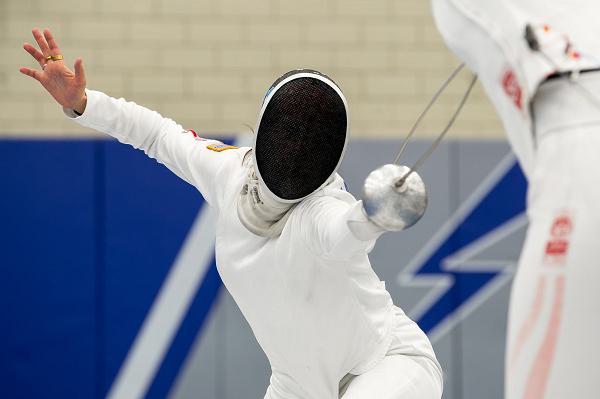
Colorado Springs, Colorado. (March 19, 2025): In this photo by Dylan Smith, the Air Force’s Christina Watrall scores a point against an opponent during a Fencing championship at the Air Force Academy. Like pirates of old, the military continues to incorporate the ancient art of Fencing into its training and competitions. With all the high-tech arms available today, what value is sword play in modern warfare?
Archeologists tell us the first evidence of sword fighting was discovered on a temple wall in Egypt, circa 1190 BC. These early drawings depicted warriors in combat as well as individuals apparently participating in a duel. In ancient Greece, swordsmanship became a staple of the Olympic Games and the Greeks established the first Fencing school teaching combat styles that are still used today.
Fencing comes from the Latin word “defensa” meaning “protection” which was later shortened to Fencing. The sport involves two competitors using a sword (épée, foil, or saber) to strike their opponent in approved areas while adhering to certain honorable practices.
Competitors win a point for every strike made to a valid part of the body, and bouts are divided into three rounds of three minutes each. The first Fencer to reach fifteen points wins the bout. Fencers wear protective gear including a mask, protective jacket, and special gloves to prevent injuries. Before the invention of masks, a piece of cloth with colored dye was attached to the tip of swords to mark a strike. Today, scores are recorded using sophisticated machines with advanced sensors located on the target areas.
Fencing requires intense concentration and tactical strategy while playing by specific rules of conduct. It also teaches important military tenets like self-control, physical agility, and mental toughness. Physically, the sport improves coordination and develops quick reflexes. Most important, Fencing requires anticipating an opponent’s next strategic move, a must-have skill for the modern warfighter.
For these reasons, Fencing is included in the military’s World Class Athlete Program which allows elite athletes compete in the Olympics while serving on active duty. Like the swashbucklers of old, today’s military is still absorbing the benefits of this ancient art.


